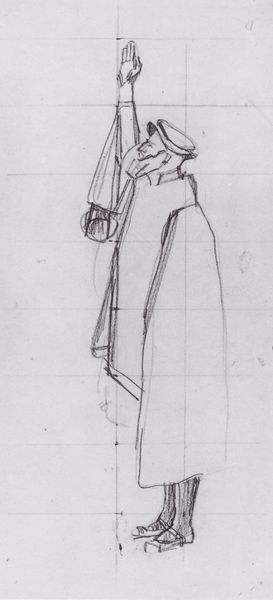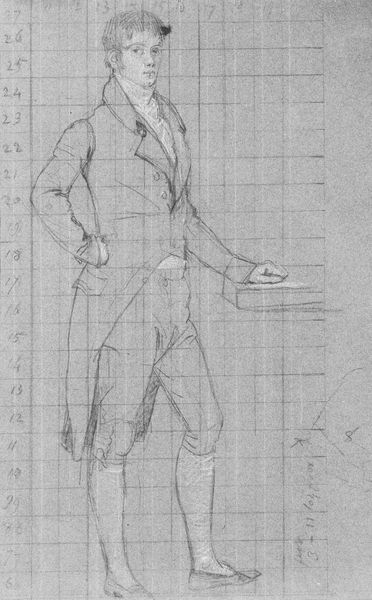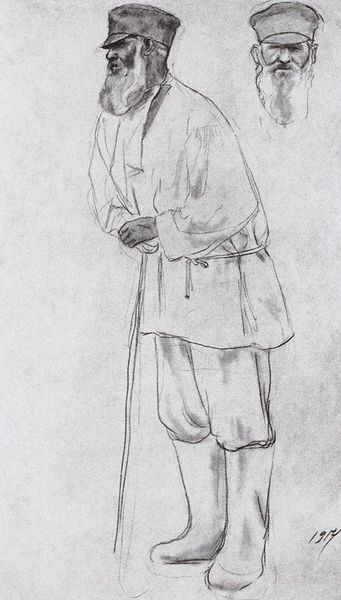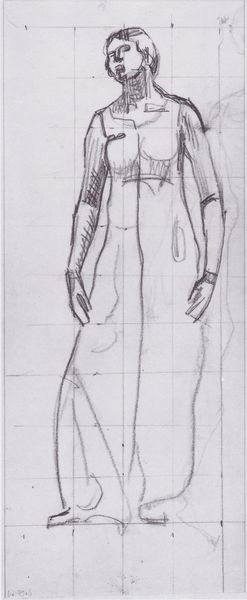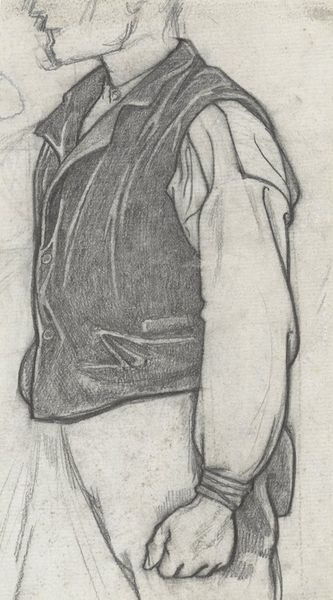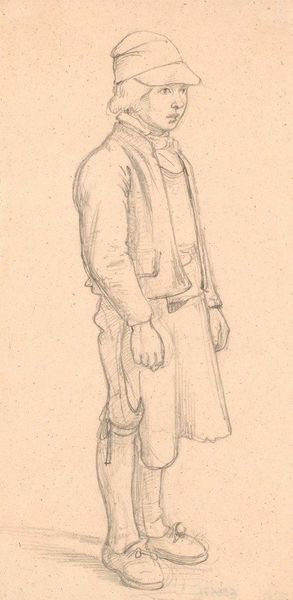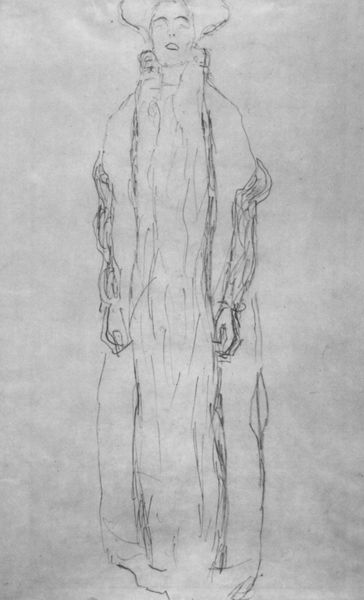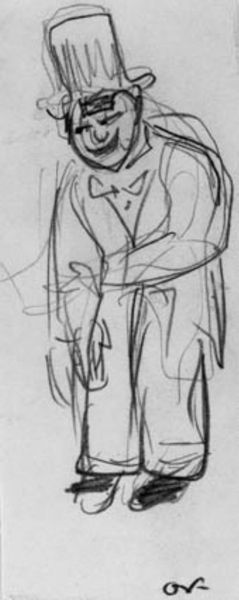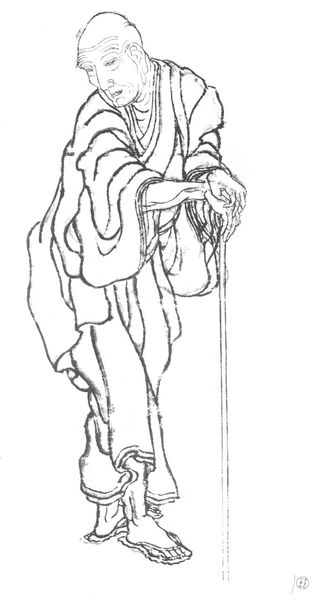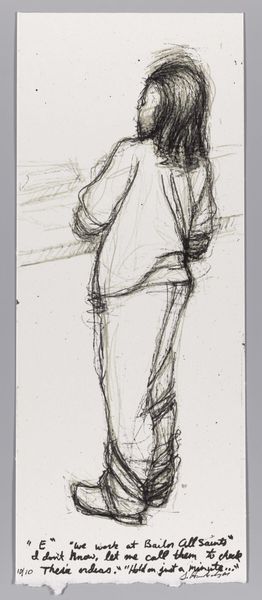
Study for "The Knatchbull Family": Sir Edward Knatchbull 1800 - 1802
0:00
0:00
drawing, paper, pencil
#
portrait
#
drawing
#
neoclacissism
#
pencil sketch
#
paper
#
geometric
#
pencil
#
men
Dimensions: 13 13/16 x 11 3/16 in. (35.1 x 28.4 cm)
Copyright: Public Domain
Curator: Let’s discuss John Singleton Copley’s “Study for ‘The Knatchbull Family’: Sir Edward Knatchbull,” created between 1800 and 1802. It’s a pencil sketch on paper, a preparatory work for a larger family portrait. What strikes you first? Editor: The geometric grid overlaid on the figure creates a strange sense of constriction and precision. It reminds me that this wasn't about capturing a free-flowing essence, but about crafting a very specific image—control, order, even the rationality implied by neoclassicism feels so deliberate here. Curator: Indeed, this neoclassicism situated Knatchbull within a historical and ideological framework, connecting him to ideals of civic virtue and reason which in turn, lent authority. Consider how portraiture served to reinforce societal hierarchies at the time; this preliminary sketch offers a fascinating glimpse into how those images were methodically constructed and reinforced. The grid system used to make a copy, scale or transfer this drawing has origins dating back to the Renaissance, and would still be in use in the late 20th century. Editor: The choice of costume feels symbolic, as well. A long jacket with knee high leggings point to somebody of money, status and access, all common cultural hallmarks. And that extended hand – offering, presenting, but to whom and what? Curator: It highlights the way in which class and gender were so tightly interwoven within this artistic production. Knatchbull, a man of stature, embodies patriarchal authority through his posture and attire, signifying dominance through visual symbols. It reveals the complex, intertwined narratives embedded in this study, that were meant to give Edward symbolic powers of leadership in visual shorthand. Editor: Precisely! Copley’s decision to present Knatchbull in this way speaks to the enduring power of images to shape our understanding of the past. This sketch lets us see the bones of that shaping, those visual strategies at work, and consider who benefits from them and what values they promote. The very tools of its creation underscore themes of rational planning and strategic action. Curator: So it provides the opportunity to analyze broader power dynamics within society at that specific time. It’s amazing to think about the political implications subtly interwoven here with composition. Editor: Right! We are left to interpret, left to question what cultural ideas endure and are reinforced. This brief study helps unearth and consider what echoes on in its visual legacy.
Comments
No comments
Be the first to comment and join the conversation on the ultimate creative platform.


